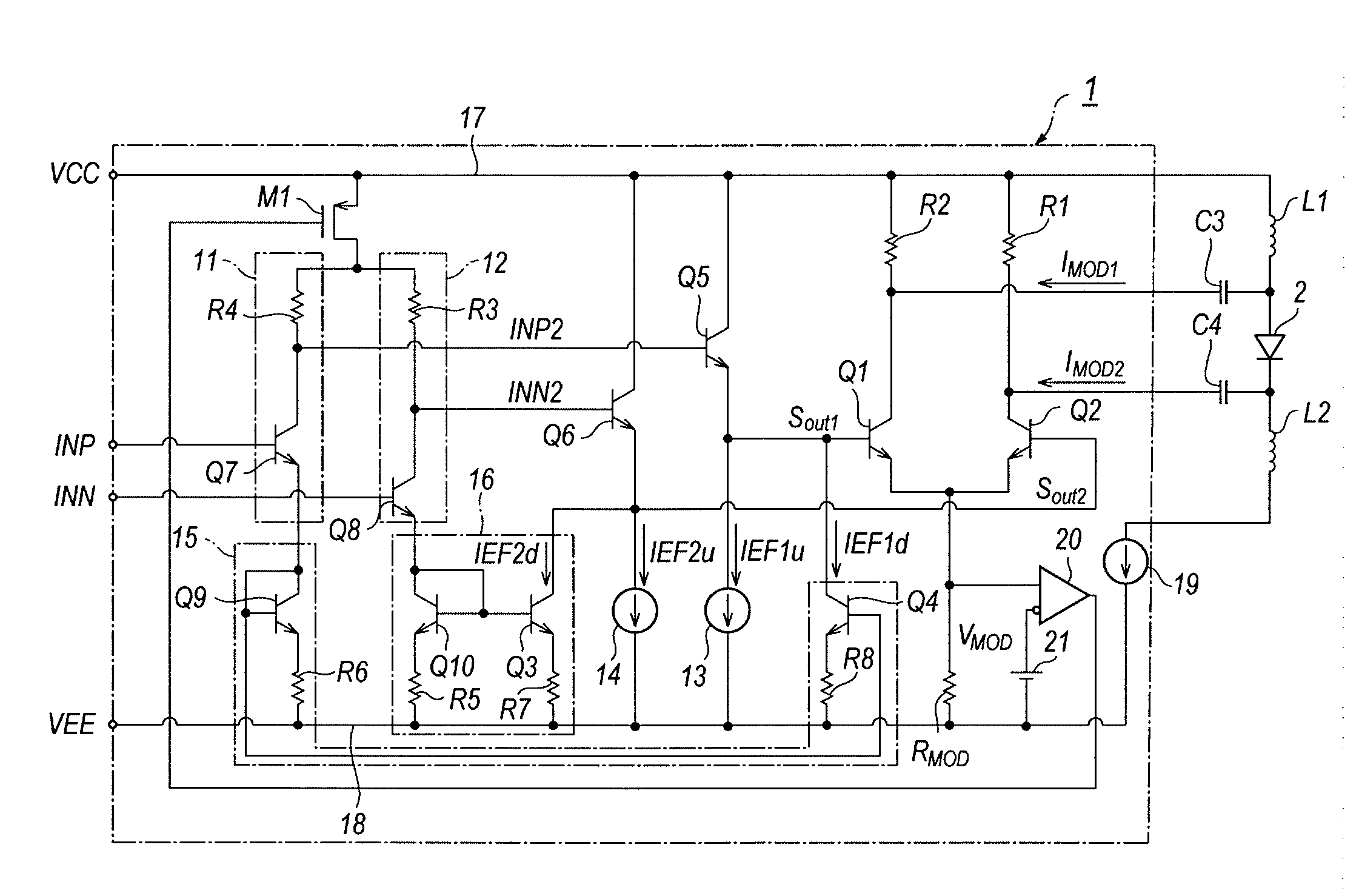Ld-driver improving falling edge of driving signal
a technology of driver and driving signal, applied in semiconductor lasers, laser details, instruments, etc., can solve the problems of increasing power consumption, complex layout of two emitter followers, and increasing power consumption
- Summary
- Abstract
- Description
- Claims
- Application Information
AI Technical Summary
Benefits of technology
Problems solved by technology
Method used
Image
Examples
Embodiment Construction
[0030]Next, some preferred embodiments of an LD driver according to the present invention will be described as referring to accompanying drawings. In the description of the drawings, the same or like numerals or the symbols will refer to the same or like elements without overlapping explanations. Although the specification concentrates on bipolar transistors with a base as the control electrode, and an emitter and a collector as the current electrode, the active devices used in the circuit may be the FET with a gate as the control electrode, and a drain and a source as the current electrode.
[0031]FIG. 1 is a circuit diagram of an LD-Driver according to an embodiment of the present invention. The LD-Driver 1 generates a differential current, IMOD1 and IMOD2 to drive the LD 2. The LD driver 1 comprises the first and second control units.
[0032]The first control unit provides the driving signal SOUT1 to the transistor Q1 in the output circuit by receiving the input signal INP with a pos...
PUM
 Login to View More
Login to View More Abstract
Description
Claims
Application Information
 Login to View More
Login to View More - R&D
- Intellectual Property
- Life Sciences
- Materials
- Tech Scout
- Unparalleled Data Quality
- Higher Quality Content
- 60% Fewer Hallucinations
Browse by: Latest US Patents, China's latest patents, Technical Efficacy Thesaurus, Application Domain, Technology Topic, Popular Technical Reports.
© 2025 PatSnap. All rights reserved.Legal|Privacy policy|Modern Slavery Act Transparency Statement|Sitemap|About US| Contact US: help@patsnap.com



